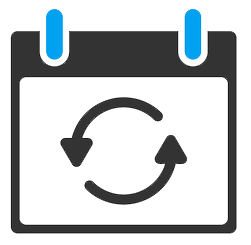Many manufacturing gigs are cyclical, with peaks and troughs of production throughout the year. And while operations may have adapted to ensure smoothness during both, manufacturers still using a linear maintenance program will see issues during times of heightened demand. The necessary solution is to adjust your maintenance schedule to account for the ebb and flow.
Unfortunately, many manufacturers are hesitant to deviate from the predictive models and recommended maintenance specifications for their equipment. If a machine does 20,000 cycles in each January, February, and March, the same month-over-month maintenance plan will work. But if it does 5,000 in January, 35,000 in February, and 20,000 in March, the maintenance schedule needs to adapt.
Increased operations demand more maintenance
It goes without saying that the more uptime a machine faces, the shorter the time between its maintenance demands. However, many manufacturers with scheduled maintenance intervals mistakenly believe their plan includes variable stress on machines. What they’re not accounting for are crucial problems that arise from overwork, outside of what a normal maintenance plan may account for, such as:
- Increased production demands more frequent maintenance.
- Constant start/stop may cause premature part wear.
- Overworked machinery may develop irregularities.
- Time crunches can lead to mistakes and defects.
Paying close attention on the floor is one of the best ways to understand the condition and needs of machinery and act accordingly. The manufacturing floor is where early warning signs appear and operator accountability proves invaluable.
Challenges to meeting increased maintenance demands
Even if you realize cyclical maintenance demands early, you still need to address them. This becomes immediately tricky.
First, you have to provide the right caliber of preventive, proactive, or reactive maintenance. Then, you have to adjust your established maintenance schedule accordingly — there’s no sense in delivering the same maintenance twice or maintenance that nullifies recent upkeep. Finally, maintenance logs need updating to discourage mistakes. On top of this, several challenges make spur-of-the-moment maintenance difficult:
- Staffing concerns
- Uncertainty in maintenance expectations
- More complex production logistics
- Lack of proper parts inventoried on hand
These issues, in addition to the chaos of a fully staffed, full-capacity factory floor, put proper maintenance out of reach for many manufacturers during a peak business cycle.
Solving the cyclical maintenance conundrum
Though difficult, adapting to cyclical maintenance during peak business cycles is not impossible. It takes foresight and understanding of the specific cyclical times for each manufacturer. It also demands the willingness to deviate from a linear maintenance plan where required and adapt in real time. A few of the basic keys for success include:
 Using real-time predictive data
Using real-time predictive data- Staffing accordingly or outsourcing
- Adopting a flexible floor schedule
- Ordering excess consumables stock
Above all else, flexibility is key. Being flexible in the type of maintenance you deliver (reactive versus proactive) and adaptive in the way you prepare your maintenance team will bring real benefit to your factory floor during its busiest times. A linear maintenance plan may be comfortable — but a cyclical, adaptive one is effective.
